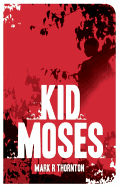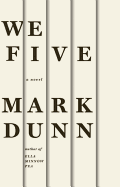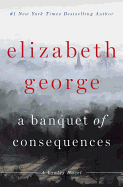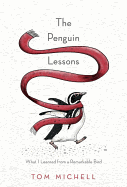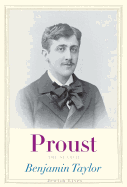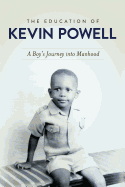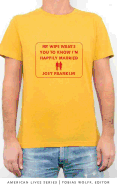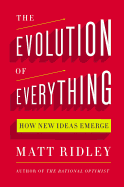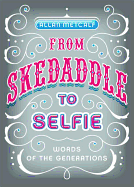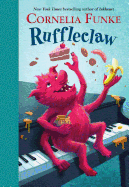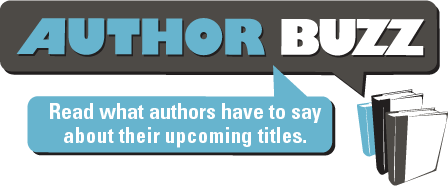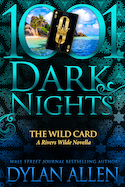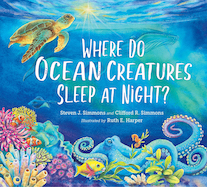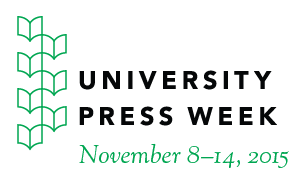 In the summer of 1978, President Jimmy Carter proclaimed a University Press Week "in recognition of the impact, both here and abroad, of American university presses on culture and scholarship." This occasion has a new life under the auspices of the Association of American University Presses--the AAUP, with more than 130 member presses--which brought the Week back in 2012, and has observed it ever since.
In the summer of 1978, President Jimmy Carter proclaimed a University Press Week "in recognition of the impact, both here and abroad, of American university presses on culture and scholarship." This occasion has a new life under the auspices of the Association of American University Presses--the AAUP, with more than 130 member presses--which brought the Week back in 2012, and has observed it ever since.
University presses serve their parent institutions, support research and cultivate particular editorial traditions marked by dedicated publishing programs and quixotic long-range projects, punctuated by recurring lecture series and prizes, amplified by collaborations and partnerships. Their character is multifaceted, their history a lineage of books. It's worth drilling down in their catalogues, reading through finely parsed and varied categories such as migration, consumption, bio-politics, gender studies, cognitive philosophy, intelligent systems or digital humanities. In sympathetic correspondence, bookstores create unique architectures of information. The curated sections at City Lights, the fine-tuned subheadings at Chaucer's, the scholarly cairns at Literary Guillotine consolidate a depth, intensity and specificity highlighted by university press books.
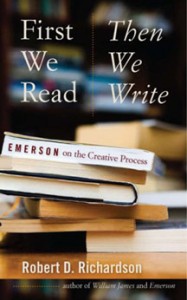 Robert D. Richardson's heroic biography of Emerson (University of California) carries the subtitle "The Mind on Fire," source of University Press Books' signature phrase: "Ten Thousand Minds on Fire." Needless to say, I notice the conflagrations. Motivated by Green Apple Books' galvanizing shelf-tag, I bought Richardson's First We Read, Then We Write (and discovered Muse Books, the Iowa Series in Creativity and Writing). Elliott Bay Book Company irresistibly displayed Julian Hoffman's The Small Heart of Things, leading me to the University of Georgia Press's publishing program in creative nonfiction. Peter Miller Books champions Elaine Scarry's exquisite On Beauty and Being Just (Princeton University Press). The Tears of Things by Peter Schwenger (University of Minnesota Press) cried out at the Hammer Museum. Jean-Pierre Dupuy's handsomely published essay A Short Treatise on the Metaphysics of Tsunamis (Michigan State University Press) glowed at the MIT Press Bookstore. Nor did I resist James Wood's The Nearest Thing to Life (Brandeis University Press), displayed at Chevalier's Books. Just browsing Duke University Press's lists, I am struck by two very different titles: Lauren Berlant's Cruel Optimism (that cover!) and Remnants: A Memoir of Spirit, Activism, and Mothering by Rosemarie Freeney Harding and Rachel Harding. On Stanford's site, Bahiyyih Nakhjavani's The Woman Who Read Too Much (under the Redwood Press imprint) beckons.
Robert D. Richardson's heroic biography of Emerson (University of California) carries the subtitle "The Mind on Fire," source of University Press Books' signature phrase: "Ten Thousand Minds on Fire." Needless to say, I notice the conflagrations. Motivated by Green Apple Books' galvanizing shelf-tag, I bought Richardson's First We Read, Then We Write (and discovered Muse Books, the Iowa Series in Creativity and Writing). Elliott Bay Book Company irresistibly displayed Julian Hoffman's The Small Heart of Things, leading me to the University of Georgia Press's publishing program in creative nonfiction. Peter Miller Books champions Elaine Scarry's exquisite On Beauty and Being Just (Princeton University Press). The Tears of Things by Peter Schwenger (University of Minnesota Press) cried out at the Hammer Museum. Jean-Pierre Dupuy's handsomely published essay A Short Treatise on the Metaphysics of Tsunamis (Michigan State University Press) glowed at the MIT Press Bookstore. Nor did I resist James Wood's The Nearest Thing to Life (Brandeis University Press), displayed at Chevalier's Books. Just browsing Duke University Press's lists, I am struck by two very different titles: Lauren Berlant's Cruel Optimism (that cover!) and Remnants: A Memoir of Spirit, Activism, and Mothering by Rosemarie Freeney Harding and Rachel Harding. On Stanford's site, Bahiyyih Nakhjavani's The Woman Who Read Too Much (under the Redwood Press imprint) beckons.
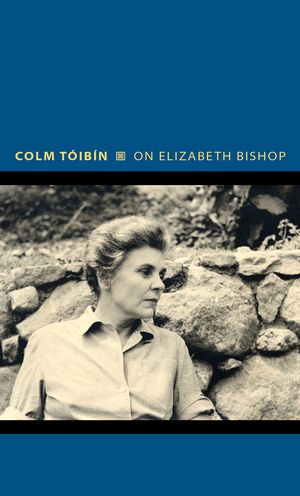 Rereading Joy Harjo's In Mad Love and War in the Wesleyan Poetry Series, I appreciate university press support for poetry: the Pitt Poetry Series; the Miller Williams Poetry Series at University of Arkansas; the Princeton Series of Contemporary Poets; the Yale Younger Poet Series. New biographies brilliantly pair writer with subject in Writers on Writers at Princeton (Colm Tóibín, On Elizabeth Bishop); Jewish Lives at Yale (Francine Prose, Peggy Guggenheim).
Rereading Joy Harjo's In Mad Love and War in the Wesleyan Poetry Series, I appreciate university press support for poetry: the Pitt Poetry Series; the Miller Williams Poetry Series at University of Arkansas; the Princeton Series of Contemporary Poets; the Yale Younger Poet Series. New biographies brilliantly pair writer with subject in Writers on Writers at Princeton (Colm Tóibín, On Elizabeth Bishop); Jewish Lives at Yale (Francine Prose, Peggy Guggenheim).
University presses commission translations, offering new access to literatures. Columbia University Press has announced a new program in Russian translation. NYU, Georgetown, Cambridge, Syracuse publish in Arabic and Middle Eastern literature. Yale's Margellos World Republic of Letters translates canonical and contemporary works. Harvard launched the Murty Classical Library of India. Seagull Books partners with University of Chicago; Semiotext(e) with MIT; Open Letter is uniquely associated with the University of Rochester. Translation permeates much scholarly publishing, broadens global understanding and introduces scholarship across borders. Take a look at Translations from Chicago.
 Embedded in their state and region, university presses publish distinctively in natural history, geography, history, memoir, literature, local architecture, field guides, roadways, foodways--all enriching our sense of place. A bookman's holiday in Alaska finds books from University Presses of Washington, Alaska, Toronto. Homer Bookstore offers Bear Down, Bear North by Melinda Moustakis, a winner of the Flannery O'Connor Award for Short Fiction published through University of Georgia Press. At Sing Alley Books in Petersburg is Eva Saulitis's heartbreaking Into Great Silence from Beacon Press, a nonprofit AAUP member.
Embedded in their state and region, university presses publish distinctively in natural history, geography, history, memoir, literature, local architecture, field guides, roadways, foodways--all enriching our sense of place. A bookman's holiday in Alaska finds books from University Presses of Washington, Alaska, Toronto. Homer Bookstore offers Bear Down, Bear North by Melinda Moustakis, a winner of the Flannery O'Connor Award for Short Fiction published through University of Georgia Press. At Sing Alley Books in Petersburg is Eva Saulitis's heartbreaking Into Great Silence from Beacon Press, a nonprofit AAUP member.
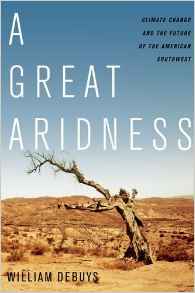 University presses publish in every corner of America. University of North Carolina Press offers "essential Southern reading." University of Illinois celebrates Chicago; Wayne State University Press cheers Detroit. Emily Dickinson is at home at Harvard University Press, Thomas Jefferson at University of Virginia, Custer and Willa Cather at University of Nebraska. Always reading about the West, I discover Michael Ventura's If I Was a Highway (Texas Tech) at Chaucer's; Richard Manning's Rewilding the West (University of California) at Green Arcade; William deBuys's A Great Aridness (Oxford) at Collected Works. Jack Turner's The Abstract Wild (University of Arizona); Keith Basso's Wisdom Sits in Places (University of New Mexico); Reg Saner's Reaching Keet Seel (University of Utah); Richard Slotkin's Regeneration Through Violence: The Mythology of the American Frontier, 1600-1860 (University of Oklahoma)--a mere few to read again.
University presses publish in every corner of America. University of North Carolina Press offers "essential Southern reading." University of Illinois celebrates Chicago; Wayne State University Press cheers Detroit. Emily Dickinson is at home at Harvard University Press, Thomas Jefferson at University of Virginia, Custer and Willa Cather at University of Nebraska. Always reading about the West, I discover Michael Ventura's If I Was a Highway (Texas Tech) at Chaucer's; Richard Manning's Rewilding the West (University of California) at Green Arcade; William deBuys's A Great Aridness (Oxford) at Collected Works. Jack Turner's The Abstract Wild (University of Arizona); Keith Basso's Wisdom Sits in Places (University of New Mexico); Reg Saner's Reaching Keet Seel (University of Utah); Richard Slotkin's Regeneration Through Violence: The Mythology of the American Frontier, 1600-1860 (University of Oklahoma)--a mere few to read again.
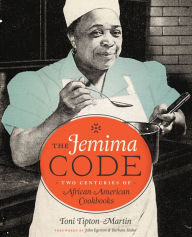 Enduring, necessary, radiant: Henry Bugbee's The Inward Morning, reissued by University of Georgia Press; Francois Jullien's In Praise of Blandness (Zone Books at MIT); Robert Pogue Harrison's Forests (Chicago). Personal reading finds hidden gems: Gordon Campbell's The Hermit in the Garden (Oxford), Ilana Blumberg's Houses of Study (Nebraska), Jane T. Costow's Heart-Pine Russia (Cornell), Jeremy Mynot's Birdscapes (Princeton)--all enchant. I won't even get started on food history--although I cherish the illustration of a jar in which to keep dormice in A Taste of Ancient Rome (Chicago). I anticipate reading culinary historian Toni Tipton-Martin's The Jemima Code: Two Centuries of African American Cookbooks (University of Texas); must read Anna Lowenhaupt Tsing's The Mushroom at the End of the World (Princeton).
Enduring, necessary, radiant: Henry Bugbee's The Inward Morning, reissued by University of Georgia Press; Francois Jullien's In Praise of Blandness (Zone Books at MIT); Robert Pogue Harrison's Forests (Chicago). Personal reading finds hidden gems: Gordon Campbell's The Hermit in the Garden (Oxford), Ilana Blumberg's Houses of Study (Nebraska), Jane T. Costow's Heart-Pine Russia (Cornell), Jeremy Mynot's Birdscapes (Princeton)--all enchant. I won't even get started on food history--although I cherish the illustration of a jar in which to keep dormice in A Taste of Ancient Rome (Chicago). I anticipate reading culinary historian Toni Tipton-Martin's The Jemima Code: Two Centuries of African American Cookbooks (University of Texas); must read Anna Lowenhaupt Tsing's The Mushroom at the End of the World (Princeton).
My college's advance reading list included Mircea Eliade's Cosmos and History. I see myself at 17 reading at the pool, embarking on a liberal education with the Top 40 blasting from the snack bar. "Among countless stones, one stone becomes sacred--and hence instantly becomes saturated with being--because it constitutes a hierophany, or possesses mana, or again because it commemorates a mythical act, and so on...." I was intoxicated with the mythopoetic. Kubler's The Shape of Time, Kermode's The Sense of an Ending, Pritchard's Ancient Near East Texts soon followed. My era was marked by Princeton's Bollingen editions. Jung's Synchronicity was clearly in operating mode. All remain in print. All imprinted me. --Patricia Nelson
Patricia Nelson started out at the campus bookstore for the Claremont Colleges, and was buyer and manager at UNM Bookstore, Living Batch and Page One in Albuquerque. A longtime university press rep for Yale, MIT and Harvard, she lives in Santa Fe.
Celebrating University Press Week, November 8-14
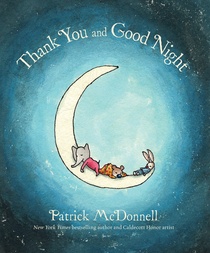 Thank You and Good Night (Little, Brown) by Caldecott Honor artist Patrick McDonnell (Me... Jane) is about a surprise pajama party for an adorable rabbit named Clement, who with his animal friends do a chicken dance and have a funny-face contest until the night winds down and the kindly human, Maggie, suggests: "Now, before we go to sleep, let's all say what we were thankful for this day." The long, long list--from a moon to a red balloon--is a soothing bedtime rhyme that ends with a good-night kiss.
Thank You and Good Night (Little, Brown) by Caldecott Honor artist Patrick McDonnell (Me... Jane) is about a surprise pajama party for an adorable rabbit named Clement, who with his animal friends do a chicken dance and have a funny-face contest until the night winds down and the kindly human, Maggie, suggests: "Now, before we go to sleep, let's all say what we were thankful for this day." The long, long list--from a moon to a red balloon--is a soothing bedtime rhyme that ends with a good-night kiss.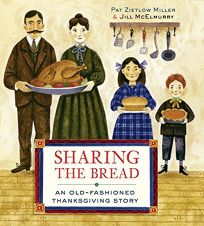 "Mama, fetch the cooking pot./ Fetch our turkey-cooking pot./ Big and old and black and squat./ Mama, fetch the pot." So begins Pat Zietlow Miller's Sharing the Bread: An Old-Fashioned Thanksgiving Story (Schwartz & Wade/Random House). Everyone pitches in to cook a delicious Thanksgiving dinner in this simple, rhythmic story set in a bustling 19th-century American household. Jill McElmurry's wonderful illustrations, as golden as freshly baked bread, shine a warm light on this nostalgic celebration of food and family, tradition and teamwork.
"Mama, fetch the cooking pot./ Fetch our turkey-cooking pot./ Big and old and black and squat./ Mama, fetch the pot." So begins Pat Zietlow Miller's Sharing the Bread: An Old-Fashioned Thanksgiving Story (Schwartz & Wade/Random House). Everyone pitches in to cook a delicious Thanksgiving dinner in this simple, rhythmic story set in a bustling 19th-century American household. Jill McElmurry's wonderful illustrations, as golden as freshly baked bread, shine a warm light on this nostalgic celebration of food and family, tradition and teamwork.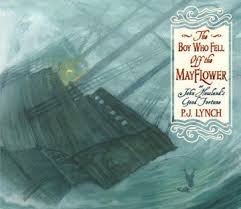 Irish author-illustrator P.J. Lynch offers a deeper look into the history of Thanksgiving in America for ages 8 and older, with The Boy Who Fell Off the Mayflower or John Howland's Good Fortune (Candlewick). John Howland left London in 1620 on the Mayflower as a teenaged indentured servant, and this vivid, sweepingly cinematic picture book tells the story of his dangerous voyage to "New Plymouth" and the eventual friendship with Squanto and the great King Massasoit of the Wampanoag that led to the shared harvest dinner that went down in history. --Karin Snelson, children's and YA editor, Shelf Awareness
Irish author-illustrator P.J. Lynch offers a deeper look into the history of Thanksgiving in America for ages 8 and older, with The Boy Who Fell Off the Mayflower or John Howland's Good Fortune (Candlewick). John Howland left London in 1620 on the Mayflower as a teenaged indentured servant, and this vivid, sweepingly cinematic picture book tells the story of his dangerous voyage to "New Plymouth" and the eventual friendship with Squanto and the great King Massasoit of the Wampanoag that led to the shared harvest dinner that went down in history. --Karin Snelson, children's and YA editor, Shelf Awareness




 In the summer of 1978, President Jimmy Carter proclaimed a University Press Week "in recognition of the impact, both here and abroad, of American university presses on culture and scholarship." This occasion has a new life under the auspices of the Association of American University Presses--the AAUP, with
In the summer of 1978, President Jimmy Carter proclaimed a University Press Week "in recognition of the impact, both here and abroad, of American university presses on culture and scholarship." This occasion has a new life under the auspices of the Association of American University Presses--the AAUP, with  Robert D. Richardson's heroic biography of Emerson (University of California) carries the subtitle "The Mind on Fire," source of
Robert D. Richardson's heroic biography of Emerson (University of California) carries the subtitle "The Mind on Fire," source of  Rereading Joy Harjo's In Mad Love and War in the Wesleyan Poetry Series, I appreciate university press support for poetry: the Pitt Poetry Series; the Miller Williams Poetry Series at University of Arkansas; the Princeton Series of Contemporary Poets; the Yale Younger Poet Series. New biographies brilliantly pair writer with subject in Writers on Writers at Princeton (Colm Tóibín, On Elizabeth Bishop); Jewish Lives at Yale (Francine Prose, Peggy Guggenheim).
Rereading Joy Harjo's In Mad Love and War in the Wesleyan Poetry Series, I appreciate university press support for poetry: the Pitt Poetry Series; the Miller Williams Poetry Series at University of Arkansas; the Princeton Series of Contemporary Poets; the Yale Younger Poet Series. New biographies brilliantly pair writer with subject in Writers on Writers at Princeton (Colm Tóibín, On Elizabeth Bishop); Jewish Lives at Yale (Francine Prose, Peggy Guggenheim). Embedded in their state and region, university presses publish distinctively in natural history, geography, history, memoir, literature, local architecture, field guides, roadways, foodways--all enriching our sense of place. A bookman's holiday in Alaska finds books from University Presses of Washington, Alaska, Toronto.
Embedded in their state and region, university presses publish distinctively in natural history, geography, history, memoir, literature, local architecture, field guides, roadways, foodways--all enriching our sense of place. A bookman's holiday in Alaska finds books from University Presses of Washington, Alaska, Toronto.  University presses publish in every corner of America. University of North Carolina Press offers "essential Southern reading." University of Illinois celebrates Chicago; Wayne State University Press cheers Detroit. Emily Dickinson is at home at Harvard University Press, Thomas Jefferson at University of Virginia, Custer and Willa Cather at University of Nebraska. Always reading about the West, I discover Michael Ventura's If I Was a Highway (Texas Tech) at Chaucer's; Richard Manning's Rewilding the West (University of California) at Green Arcade; William deBuys's A Great Aridness (Oxford) at Collected Works. Jack Turner's The Abstract Wild (University of Arizona); Keith Basso's Wisdom Sits in Places (University of New Mexico); Reg Saner's Reaching Keet Seel (University of Utah); Richard Slotkin's Regeneration Through Violence: The Mythology of the American Frontier, 1600-1860 (University of Oklahoma)--a mere few to read again.
University presses publish in every corner of America. University of North Carolina Press offers "essential Southern reading." University of Illinois celebrates Chicago; Wayne State University Press cheers Detroit. Emily Dickinson is at home at Harvard University Press, Thomas Jefferson at University of Virginia, Custer and Willa Cather at University of Nebraska. Always reading about the West, I discover Michael Ventura's If I Was a Highway (Texas Tech) at Chaucer's; Richard Manning's Rewilding the West (University of California) at Green Arcade; William deBuys's A Great Aridness (Oxford) at Collected Works. Jack Turner's The Abstract Wild (University of Arizona); Keith Basso's Wisdom Sits in Places (University of New Mexico); Reg Saner's Reaching Keet Seel (University of Utah); Richard Slotkin's Regeneration Through Violence: The Mythology of the American Frontier, 1600-1860 (University of Oklahoma)--a mere few to read again. Enduring, necessary, radiant: Henry Bugbee's The Inward Morning, reissued by University of Georgia Press; Francois Jullien's In Praise of Blandness (Zone Books at MIT); Robert Pogue Harrison's Forests (Chicago). Personal reading finds hidden gems: Gordon Campbell's The Hermit in the Garden (Oxford), Ilana Blumberg's Houses of Study (Nebraska), Jane T. Costow's Heart-Pine Russia (Cornell), Jeremy Mynot's Birdscapes (Princeton)--all enchant. I won't even get started on food history--although I cherish the illustration of a jar in which to keep dormice in A Taste of Ancient Rome (Chicago). I anticipate reading culinary historian Toni Tipton-Martin's The Jemima Code: Two Centuries of African American Cookbooks (University of Texas); must read Anna Lowenhaupt Tsing's The Mushroom at the End of the World (Princeton).
Enduring, necessary, radiant: Henry Bugbee's The Inward Morning, reissued by University of Georgia Press; Francois Jullien's In Praise of Blandness (Zone Books at MIT); Robert Pogue Harrison's Forests (Chicago). Personal reading finds hidden gems: Gordon Campbell's The Hermit in the Garden (Oxford), Ilana Blumberg's Houses of Study (Nebraska), Jane T. Costow's Heart-Pine Russia (Cornell), Jeremy Mynot's Birdscapes (Princeton)--all enchant. I won't even get started on food history--although I cherish the illustration of a jar in which to keep dormice in A Taste of Ancient Rome (Chicago). I anticipate reading culinary historian Toni Tipton-Martin's The Jemima Code: Two Centuries of African American Cookbooks (University of Texas); must read Anna Lowenhaupt Tsing's The Mushroom at the End of the World (Princeton).